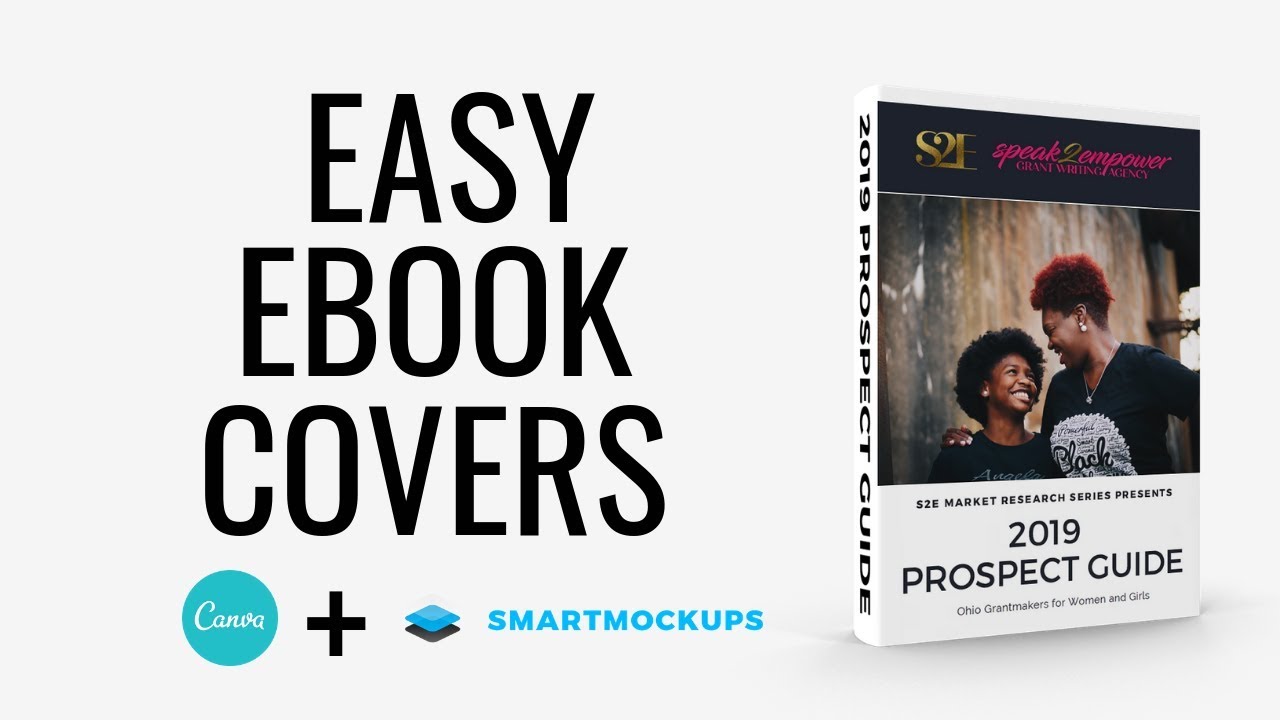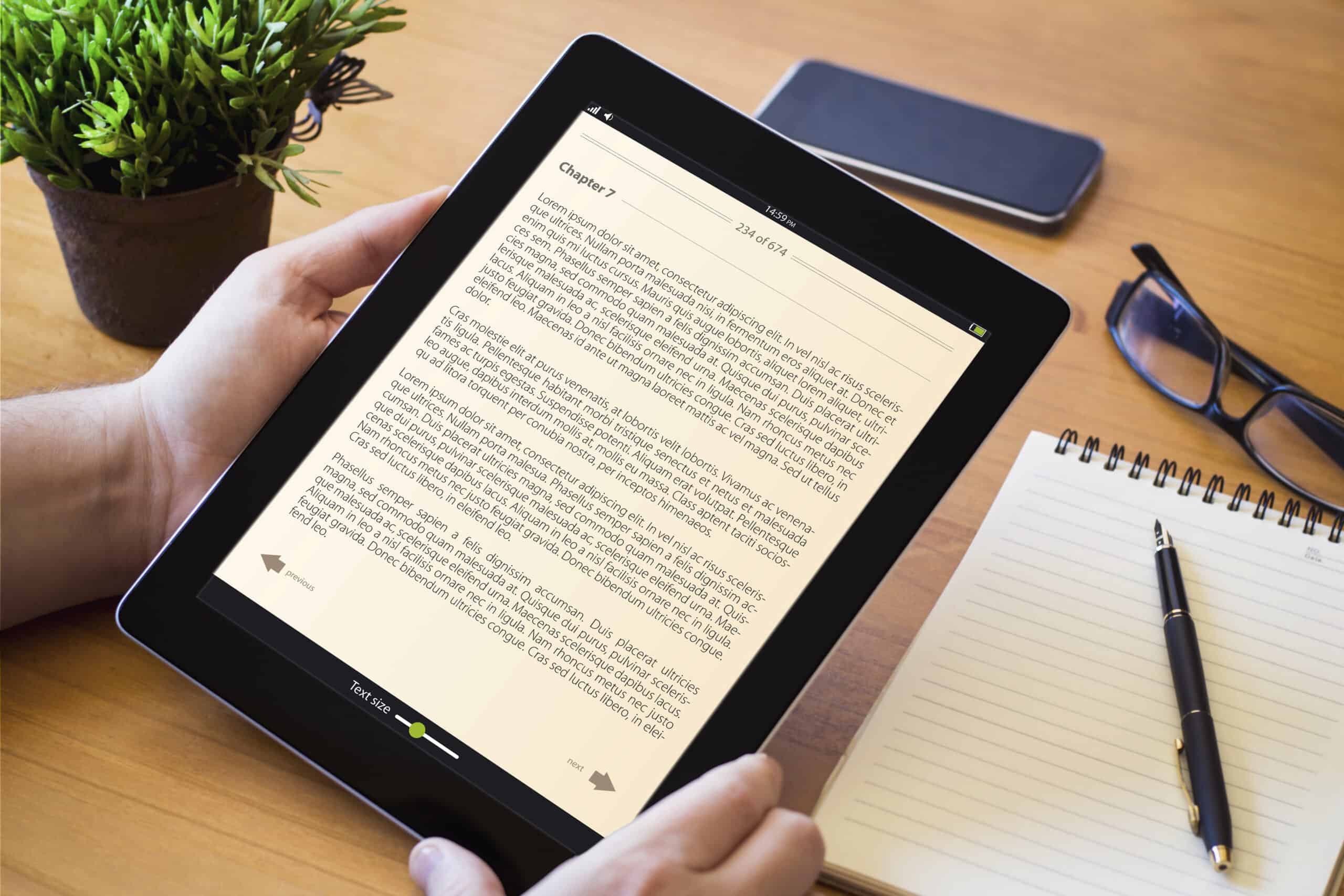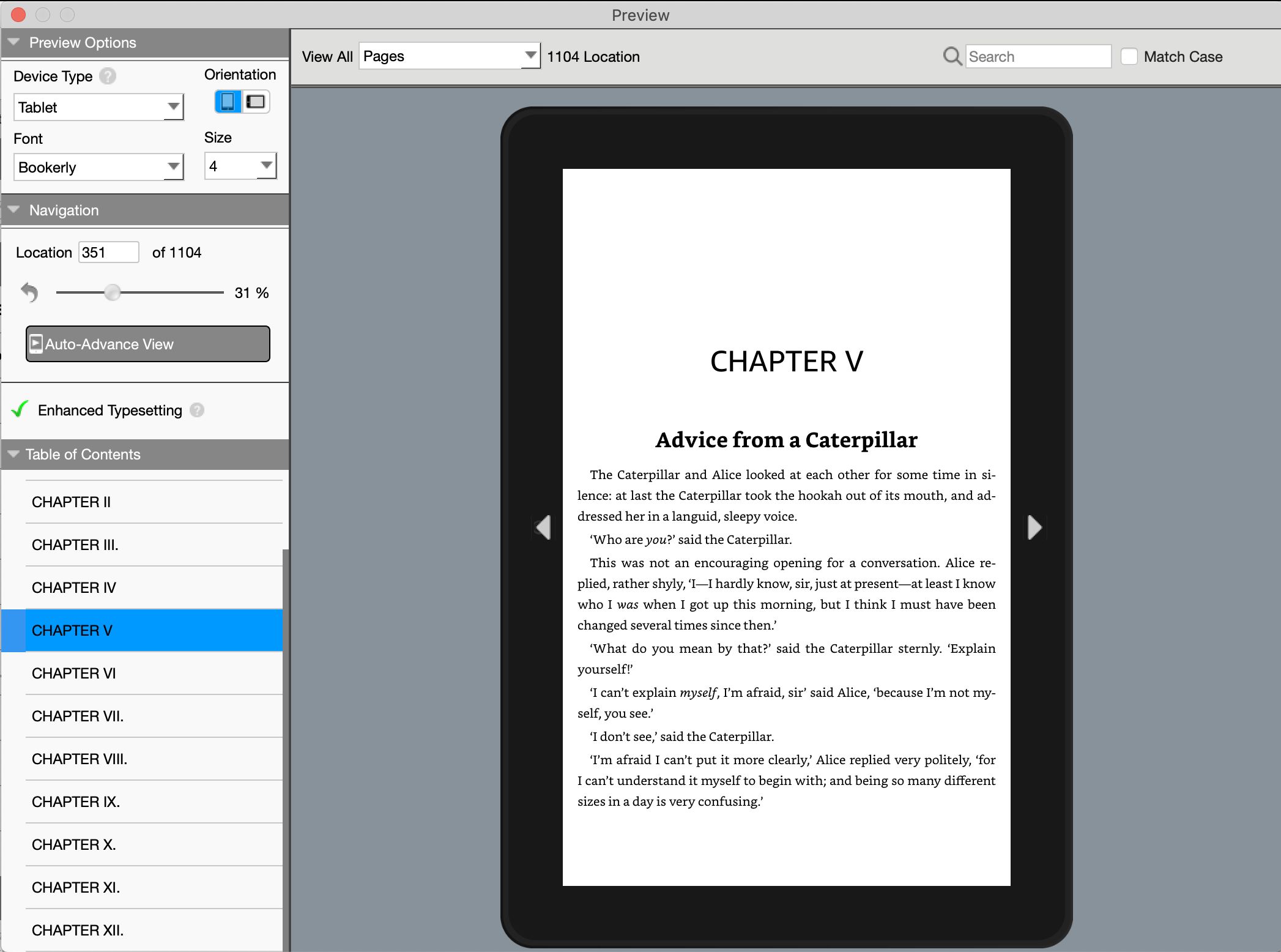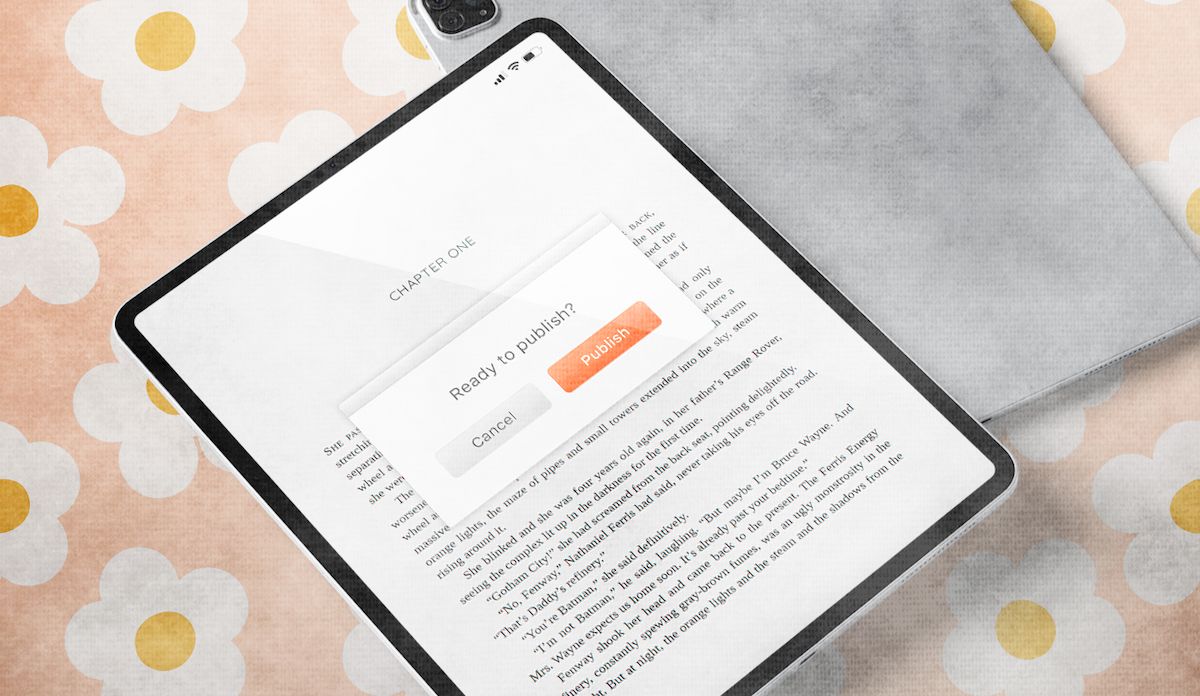Introduction
Welcome to the world of eBooks! Whether you’re a writer, a marketer, or someone looking to self-publish, creating an eye-catching eBook cover is crucial to grabbing the attention of your target audience. In this article, we will guide you through the process of making an eBook cover that not only looks professional but also reflects your book’s content and captures the interest of potential readers.
Designing an eBook cover involves several key elements, such as dimensions, images, text, colors, typography, borders, patterns, effects, and testing. Each element plays a vital role in creating a visually appealing and compelling cover. By carefully considering these elements and paying attention to detail, you can produce a cover that not only stands out but also accurately represents the essence of your eBook.
As you embark on the journey of creating your eBook cover, it’s important to keep in mind the specific requirements of different platforms. Amazon Kindle, for example, has specific guidelines for cover dimensions, while other platforms may have their own unique specifications. By understanding these requirements, you can ensure that your cover meets the necessary standards, making it compatible and visually appealing across all devices.
While it may seem intimidating at first, designing an eBook cover is an exciting and creative process. It allows you to express your unique style and capture the essence of your book in a single image. So, let’s dive in and explore the various steps involved in creating a captivating and professional-looking eBook cover.
Choosing the Right Dimensions and Format
Before you begin designing your eBook cover, it’s essential to determine the right dimensions and format to ensure compatibility with various devices and platforms. Different platforms may have specific requirements, so it’s crucial to research and understand these guidelines.
One of the most popular eBook platforms is Amazon Kindle, which recommends a cover size of 1,563 pixels in width by 2,500 pixels in height. However, it’s important to note that this dimension may vary depending on the screen size and resolution of the device. To ensure your cover looks great on all devices, consider designing it in high resolution and with a minimum of 300 DPI (dots per inch).
In addition to dimensions, you also need to consider the format of your eBook cover. Most platforms accept JPEG or PNG formats, which are widely supported and provide high-quality images. These formats allow for customization and compression while maintaining sharp and clear images.
When choosing the dimensions and format for your eBook cover, it’s important to strike a balance between file size and image quality. A large file size may affect the loading time, especially for readers with slower internet connections. On the other hand, compromising too much on image quality may result in a blurry or pixelated cover. So, aim for a size that is optimized for both visual appeal and performance.
Keep in mind that different platforms may have their own specifications, so it’s crucial to research and adhere to their guidelines. By choosing the right dimensions and format, you can ensure that your eBook cover looks professional and visually captivating across all devices and platforms.
Selecting the Perfect Image
When it comes to designing an eBook cover, selecting the right image is perhaps the most critical step. The image you choose should capture the essence of your book and entice potential readers to click and explore further. Here are some tips to help you select the perfect image for your eBook cover.
1. Relevance to the Content: The image should align with the genre, theme, or subject matter of your book. If you’re writing a romance novel, for example, a couple in an intimate embrace or a beautiful sunset could be fitting choices. Make sure the image represents the tone and style of your book to attract the right audience.
2. High Quality and Resolution: Opt for high-quality images that are clear, sharp, and visually appealing. Blurry or low-resolution images can negatively impact the overall professional look of your cover. Consider using stock photo websites or hiring a professional photographer or designer to ensure you have access to the best quality images.
3. Eye-Catching and Unique: Aim for an image that stands out from the competition. Look for impactful visuals or striking compositions that draw the viewer’s attention. At the same time, avoid clichéd or generic images that may blend in with other covers in your genre.
4. Consider the Title and Author Name Placement: Keep in mind that you will need to overlay text on the image, such as the book title and author name. Choose an image that provides sufficient space for the text to be clearly readable. Avoid selecting images with busy backgrounds or intricate patterns that can make it challenging to place text legibly.
5. Emotional Connection: Look for an image that evokes emotion or curiosity. An image that sparks intrigue, joy, fear, or any other strong emotion can pique the interest of potential readers and make them curious about your book’s contents.
Remember, your eBook cover is often the first impression readers have of your book. By selecting a visually appealing, relevant, and high-quality image, you can create a cover that grabs attention and entices readers to explore further.
Adding Text to Your eBook Cover
Once you have selected the perfect image for your eBook cover, it’s time to add the necessary text elements that will give it context and make it stand out. The text on your cover should be clear, visually appealing, and effectively communicate the message of your book. Here are some tips for adding text to your eBook cover.
1. Book Title: Place the book title prominently and make it the focal point of your cover. Choose a font that aligns with the genre and theme of your book. For example, a horror novel may benefit from a bold and dark font, while a romance novel may call for a more elegant and flowing font.
2. Author Name: Include your name as the author of the book. Depending on your preference, you can position it below the title or alongside it. Keep the font style consistent with the title, but it can be smaller and less prominent.
3. Subtitle or Tagline (Optional): If your book has a subtitle or a catchy tagline, consider adding it to the cover. The subtitle can provide additional information about the book’s content or highlight its unique selling points. Make sure the subtitle is readable and complements the overall design of the cover.
4. Font and Color Choices: Select fonts and colors that enhance readability and create a visual harmony with the image. Stick to legible fonts and avoid using too many different font styles. Consider using contrasting colors for the text that stand out against the background, making it easy to read and eye-catching.
5. Text Placement: Experiment with different placements of the text on the cover. It’s important to find a balance between allowing the image to shine and ensuring the text is clear and legible. Avoid overcrowding the cover with text or placing it in areas where it may clash with important elements of the image.
6. Testimonials or Reviews (Optional): If you have received positive reviews or testimonials for your book, you may choose to include them as well. These endorsements can add credibility and intrigue to your cover, enticing potential readers to give your book a chance.
Remember, the text on your eBook cover should be visually appealing and easy to read, while also effectively conveying the essence of your book. By carefully placing and designing the text elements, you can create a cover that captures attention and arouses curiosity among your target audience.
Using Colors and Typography
Colors and typography play a significant role in creating an impactful eBook cover. The right combination of colors and fonts can evoke emotions, convey the genre or mood of your book, and make your cover visually appealing. Here are some tips for effectively using colors and typography in your eBook cover design.
1. Color Psychology: Different colors have psychological associations and can evoke specific emotions. For example, red can symbolize passion or danger, while blue can evoke calmness or trust. Consider the genre and theme of your book and choose colors that align with the desired mood and emotions you want to convey.
2. Color Contrast: Use contrasting colors to make your text stand out and improve readability. If your background is light, opt for dark text, and vice versa. This contrast will make your title and other text elements pop and draw attention.
3. Font Styles: Choose fonts that reflect the tone and genre of your book. For example, a fantasy novel may benefit from decorative or ornate fonts, while a thriller may require bold and sharp fonts. Ensure that the chosen font is legible, even at smaller sizes, to maintain readability.
4. Font Pairing: Consider using multiple font styles for different text elements to create visual interest. Pair a bold, attention-grabbing font for the title with a more simplistic font for the author name or subtitle. Be mindful of maintaining a cohesive look and ensuring that the fonts complement each other well.
5. Consistency: Maintain consistency in your color scheme and typography throughout your eBook series, if applicable. This will create a cohesive brand identity and make it easier for readers to recognize your books. Consistency also helps establish a visual connection between your cover and the content inside.
6. Cultural Considerations: Keep in mind that different cultures may associate colors and fonts with specific meanings or symbolism. Be aware of any cultural connotations that could impact the reception of your cover, especially if you have an international audience.
Experiment with different color and font combinations to find the right balance that effectively communicates the message and genre of your book. Keep in mind that simplicity often works better than overly elaborate designs. By using colors and typography strategically, you can create a visually appealing and attention-grabbing eBook cover.
Adding Borders and Patterns
Adding borders and patterns to your eBook cover can enhance its visual appeal and help it stand out from the competition. Borders and patterns can add a touch of creativity and uniqueness while complementing the overall design. Here are some tips for effectively incorporating borders and patterns into your eBook cover.
1. Borders: Borders can frame your cover and bring attention to the central image or text. They can be simple lines or more intricate designs, depending on the style and genre of your book. Choose a border that complements the overall theme and color scheme of your cover. Ensure that the border doesn’t overpower the main elements and that it maintains visual harmony.
2. Patterns: Patterns can add texture and visual interest to your eBook cover. They can be used as background elements or incorporated into specific areas of the cover. Consider patterns that align with your book’s genre or theme. For example, a fantasy book might benefit from a whimsical or mystical pattern, while a thriller might employ a gritty or suspenseful pattern. Make sure the pattern doesn’t overshadow the main focal point and that it enhances the overall composition.
3. Balance and Proportion: When using borders and patterns, it’s crucial to maintain balance and appropriate proportions. The borders and patterns should complement the main elements of the cover without overwhelming or distracting from them. Experiment with different sizes, thicknesses, and opacity levels to find the right balance that enhances the overall design without overpowering it.
4. Consistency: If you have a series of eBooks, consider incorporating consistent border or pattern elements across your covers. This can create a recognizable and cohesive brand identity, making it easier for readers to associate your eBooks with one another.
5. Simplicity: While borders and patterns can enhance your cover, it’s important to avoid clutter or excessive complexity. Keep the overall design clean and focus on the essential elements. Remember, simplicity often has a more significant impact than overly intricate designs.
When adding borders and patterns, ensure that they harmonize with the other design elements of your eBook cover. They should enhance the overall visual appeal, attract attention, and convey the tone and style of your book. By carefully incorporating borders and patterns, you can create a cover that visually captivates your target audience.
Using Effects and Filters
Adding effects and applying filters to your eBook cover can take it to the next level by adding visual interest and creating a unique look. These effects and filters can enhance the colors, textures, or overall mood of your cover, making it more visually captivating. Here are some tips for effectively using effects and filters on your eBook cover.
1. Color Effects: Experiment with different color effects to enhance the mood or atmosphere of your cover. For example, you can create a vintage look with a sepia or black-and-white effect, or make the colors more vibrant and saturated to create a striking visual impact. Choose effects that complement the genre and style of your book and enhance the visual storytelling.
2. Shadows and Highlights: Adding shadows and highlights can create depth and dimension on your cover. By carefully placing shadows and highlights on specific elements, you can make them appear more three-dimensional and visually interesting. This technique can be especially effective for covers with objects or characters that need to stand out and grab attention.
3. Texture Overlays: Consider adding texture overlays to your cover to add depth and visual interest. Texture overlays can simulate paper, fabric, or other materials, giving your cover a tactile quality. Experiment with different textures and opacity levels to find the right balance that enhances the overall design without overwhelming the main elements.
4. Filter Styles: Applying filters can dramatically transform the overall look and feel of your eBook cover. Filters can help create a specific atmosphere or convey a particular style. For example, a vintage filter can give your cover an aged or retro look, while a futuristic filter can add a sci-fi or technological vibe. Choose filter styles that align with the content and genre of your book.
5. Subtle Adjustments: It’s important to use effects and filters in moderation to avoid overpowering the main elements of the cover. Subtle adjustments can often make a big difference in enhancing the visual appeal without overshadowing the overall design. Remember, your main goal is to create a cover that is visually captivating and entices potential readers to explore your book further.
When using effects and filters, it’s essential to strike a balance between enhancing the visual appeal and maintaining the clarity and legibility of your cover’s elements, such as text and main images. Experiment with different effects and filters, and carefully review the results to ensure they enhance the overall design of your eBook cover.
Reviewing and Testing Your eBook Cover
Once you have completed the design of your eBook cover, it’s essential to review and test it thoroughly to ensure that it meets your expectations and resonates with your target audience. Reviewing and testing your cover helps identify any potential issues and allows you to make necessary adjustments before publishing. Here are some steps to follow when reviewing and testing your eBook cover.
1. Visual Assessment: Step back and take a holistic look at your eBook cover. Does it capture the essence of your book? Is the overall design visually appealing and attention-grabbing? Pay close attention to the composition, balance, and readability of the elements. Ensure that the colors, fonts, images, and effects work harmoniously together.
2. Target Audience Feedback: Get feedback from your target audience, whether through friends, colleagues, or beta readers. Ask for their honest opinions and suggestions. The input from your target audience can help you gauge the effectiveness and appeal of your cover design. Consider their feedback and make adjustments if necessary.
3. Legibility Check: Ensure that the text on your cover is clear and legible, even at smaller sizes. Test your cover by scaling it down or viewing it on different devices to ensure that the text remains readable. If necessary, adjust font sizes, colors, or other text elements to improve legibility.
4. Test Different Backgrounds: Examine your cover against different background colors or patterns to see how it appears in different contexts. Ensure that the cover remains visually appealing and stands out, regardless of the background it’s displayed on. This will help ensure its versatility and compatibility across various platforms and websites.
5. Thumbnail Testing: Take a look at your cover in thumbnail size, as this is often how it will appear in online stores or search results. Check if the cover still grabs attention and effectively represents your book when scaled down. If necessary, make adjustments to the design or layout to ensure it remains visually engaging.
6. A/B Testing: Consider conducting A/B testing by creating multiple versions of your cover and testing them with different audiences. This can help you identify which design resonates better with your target audience and assists in making data-driven decisions to optimize the cover’s effectiveness.
By thoroughly reviewing and testing your eBook cover, you can ensure that it is visually appealing, effective in conveying your book’s essence, and resonates with your target audience. Taking the time to refine and perfect your cover will contribute to a professional and enticing first impression, increasing the chances of attracting potential readers to explore your book.
Exporting and Saving Your eBook Cover
Once you are satisfied with your eBook cover design, it’s time to export and save it in the appropriate format. Properly exporting and saving your cover ensures that it retains its quality and compatibility across different platforms and devices. Here are the steps to follow when exporting and saving your eBook cover.
1. Choose the Right File Format: The most common file formats used for eBook covers are JPEG and PNG. JPEG files are widely supported and offer a good balance between file size and image quality. PNG files, on the other hand, provide higher quality, but with a larger file size. Consider the specific requirements of the platform where you will publish your eBook to determine the ideal file format.
2. Save a High-Resolution Version: It’s essential to save your eBook cover in high resolution to ensure it looks crisp and sharp on different devices. Aim for a resolution of at least 300 DPI (dots per inch) to maintain visual quality. This is especially important for covers with intricate details or small text elements that may become blurry with lower resolutions.
3. Name the File Appropriately: Give your eBook cover file a descriptive and memorable name. This makes it easier to identify and manage among other files. Consider including the book title and author name in the file name to ensure it corresponds to the content it represents.
4. Check File Size: Ensure that the file size of your eBook cover is optimized for online use. Large file sizes could increase page loading time and potentially affect the reading experience. Use image compression techniques to reduce file size without compromising image quality. Aim for a balance between file size and visual fidelity.
5. Keep a Backup: It’s always wise to keep a backup of your eBook cover file. Store it in a secure location, such as a cloud storage service or an external hard drive. This ensures that you can easily access and retrieve the file in case of any unexpected loss or damage.
6. Test Compatibility: Before publishing your eBook, test your cover on different devices and platforms to ensure compatibility. This includes viewing it on various e-readers, tablets, and smartphones to ensure it displays correctly and maintains its visual appeal. Make any necessary adjustments if you notice any issues during compatibility testing.
By properly exporting and saving your eBook cover, you can ensure that it retains its visual quality, compatibility, and professionalism across various platforms and devices. Taking the time to follow these steps will ensure that your cover looks its best and effectively represents your book to potential readers.
Conclusion
Designing an engaging and visually appealing eBook cover is crucial for capturing the attention of potential readers and effectively representing your book. By following the steps outlined in this article, you can create a cover that stands out, aligns with your book’s genre and theme, and entices readers to explore further.
Start by choosing the right dimensions and format for your cover, ensuring compatibility across different devices and platforms. Select a captivating image that reflects the essence of your book and appeals to your target audience. Add text strategically, using fonts and colors that enhance readability and convey the tone and style of your book.
Consider using borders and patterns to add visual interest and frame your cover effectively. Experiment with effects and filters to create unique and visually appealing designs while maintaining balance and legibility. Finally, review and test your cover thoroughly to ensure its effectiveness and appeal.
Remember, your goal is to create a cover that not only attracts attention but also accurately represents the content of your book. By carefully considering each element and making adjustments as necessary, you can create a professional and captivating eBook cover that entices readers and increases the chances of your book being discovered.
So, unleash your creativity, experiment with different design elements, and don’t shy away from seeking feedback from your target audience. With a well-crafted eBook cover, you can make a lasting first impression and set the stage for the success of your book in the digital world.

























